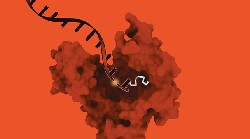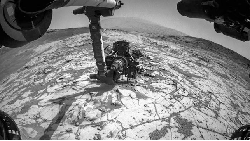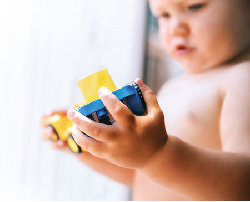June 2018 Ideas and Innovation
Read the articles selected in June 2018
Wenn Social Media krankmachen
By Karin Pollack
Source: Der Standard, 21 June
The WHO has framed the excess use of social media as a real illness, which generates addiction and breaks with reality. Teaching a responsible use, rather than demonizing the new technologies is the best medicine.
Bias detectives: the researchers striving to make algorithms fair
By Rachel Courtland
Source: Nature, 20 June

The machines have the power to affect the juridical sphere of people that struggle with judicial authority. Governments try to make algorithms transparent and reliable, but in their calculations is intrinsic the risk to multiply discriminations and injustice.
Read more:
https://www.nature.com/articles/d41586-018-05469-3
New technique could help scientists create a gene in just 1 day
By Robert F. Service
Source: Science, 18 June

A new technique could help researchers rewrite DNA for synthetic biology. Compared to traditional approaches, limited to a tiny fraction of the DNA chain, the new method can make oligonucleotides up to 1000 letters long, enabling to store massive amounts of DNA information for giant science projects.
Read more:
Slave to the algorithm
By James Bridle
Source: The Guardian Weekly, 22 June
Technology is not neutral, but opaque. The Internet has inaugurated a new dark age, when the augmented knowledge didn’t bring a more illuminated era, but has highlighted inequalities. As we are inextricably wired up with the Network, our unique choice and agency are to think.
Una terapía en fase de pruebas planta cara a la metástasis
By Nuño Domínguez
Source: El País, 15 June
In Spain is started the experimentation of the TIL, a new type of immunotherapy, studied for the tumors that don’t respond to the available immunotherapies. The pharmaceutical intelligence will have to make these treatments accessible to the national health systems.
L’intelligence artificielle excelle dans le diagnostic du mélanome
By Aude Rimbaud
Source: Le Figaro, 9 June
After the review Annals of Oncology, the application of the artificial intelligence in the observation of the melanoma provides diagnostic results more reliable than those delivered by a team of 58 dermatologists. A similar usefulness is predicted in all the cases of image recognition.
Cancer: les femmes plus vulnérables face au tabac
By Anne Prigent
Source: Le Figaro, 11 June
After a study published on the New England Journal of Medicine, the higher rate of a lung tumor among female smokers, compared to the male rate, could be explained with a different hormonal metabolism of the nicotine, while the lower quantity of cigarettes smoked by women doesn’t lower the risk.
Virtual reality lets patients ease stress and pain
By Meeri Kim
Source: The Washington Post, 12 June
VR is being tried and used in many hospitals of the world to lower pain and stress in different medical situations. VR distraction therapy is proved to reduce the need for opioids, teaching patients relaxation skills and positive thinking that help in the real world.
Thousands of women with breast cancer could avoid “toxic” chemotherapy
By Alex Matthews-King
Source: The Independent, 4 June
A new US clinical trial has found that chemotherapy for breast cancer can be avoided in 70 percent of patients, that are the women resulting hormone receptor positive and HER2 negative and with a recurrence score differing after the age.
Sucking carbon dioxide from air is cheaper than scientists thought
By Jeff Tollefson
Source: Nature, 7 June

An economic analysis published on Joule and based on the outcomes of the activity carried out since 2015 by a CO2-extraction plant located in British Columbia shows that the costs of this technology are definitely lower than those estimated in an eminent 2011 scientific evaluation, what makes possible its commercial viability.
Read more:
https://www.nature.com/articles/d41586-018-05357-w
NASA rover hits organic pay dirt on Mars
By Paul Voosen
Source: Science, 7 June

Samples taken from a lakebed in Mars have shown complex organic macromolecules that could stem from biology or geology, but however are a clue for the preservation of potential ancient life in the Martian environment.
Read more:
La loi anti-“fake news” contestée
By Marina Alcaraz
Source: Les Echos, 8 June
The French Parliament has begun the examination of a legislative text which intends to fight the fake news spread through the web during the electoral campaigns. The conditions for the application of the regulation are so restrictive that risk to legitimate the wrong information.
PRACE Annual Report 2017
Source: http://www.prace-ri.eu
30 years after the birth of DNA nanotechnology, Prof. Mattia Falconi of the University Tor Vergata has participated to the PRACE call with a study on DNA nanocages, structures that help to control the activity of enzymes and can be used for advanced biomedical purposes.
Read more:
http://www.prace-ri.eu/IMG/pdf/Prace-Annual-Report2017_LOWRES.pdf
16th Project Access Call- Awarded Projects
Source: http://www.prace-ri.eu
The University Tor Vergata has been awarded within the European competition PRACE for its project Optel2d Opto-electronic properties of 2D Transition Metal Dichalcogenides with DFT and post-DFT simulations, led by the Professor Maurizia Palummo.
Read more:
http://www.prace-ri.eu/prace-16th-project-call/
New artificial nerves could transform prosthetics
By Robert F. Service
Source: Science, 31 May
Researchers from Stanford University have constructed a nerve made of organic components to provide future prosthetics more sensory information. The flexible organic materials are cheap to make and fit for being inserted into pliable human tissue, which could allow inserting large numbers of artificial nerves.
Read more:
http://www.sciencemag.org/news/2018/05/new-artificial-nerves-could-transform-prosthetics
How researchers are teaching AI to learn like a child
By Matthew Hutson
Source: Science, 24 May

Researchers are trying to reproduce in AI the capacity to learn by trial and error which characterizes early childhood intelligence. The purpose of these experiments is to entrust AI with tasks that require flexibility and common sense and at the same time, to build on the representational structure innate in the human brain.
Read more:
http://www.sciencemag.org/news/2018/05/how-researchers-are-teaching-ai-learn-child
Info
-
Pubblicato il :
02/07/2018
Modificato il : 04/04/2019
Allegati
- Slave to the algorithm pdf
- Wenn Social Media krankmachen pdf
- Una terapía en fase de pruebas planta cara a la metástasis pdf
- Virtual reality lets patients ease stress and pain pdf
- Les femmes plus vulnérables face au tabac pdf
- L'intelligence artificielle et le mélanome pdf
- La loi anti-fake news contestée pdf
- Thousands of women could avoid chemotherapy pdf

